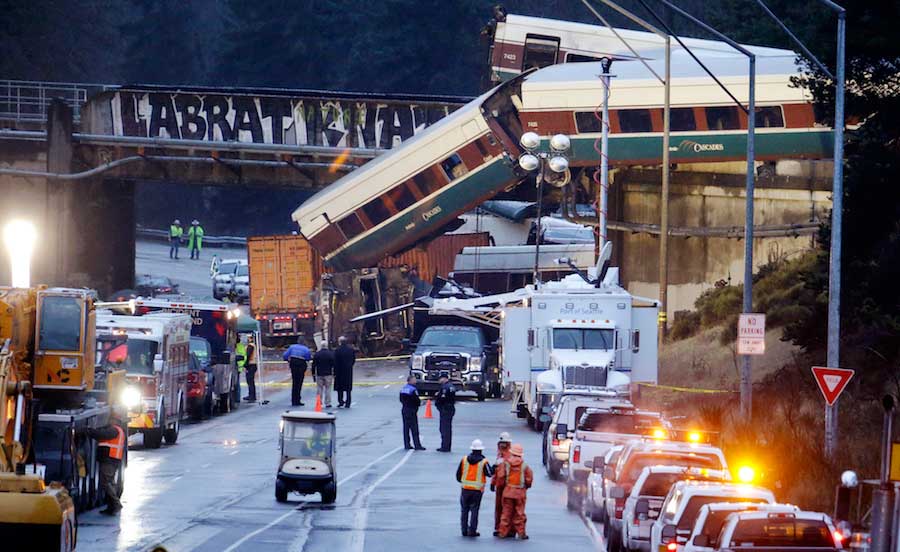Would positive train control prevent a train wreck like the recent one near Tacoma?
Of course. Asking a human to stay focused for many hours to watch for an event, even if expected, is a recipe for occasional failure. Consider the the situation of proofreading.
How many caught the double "the" of the last sentence. And you have been reading for just a few moments.
Even automobiles are now being fitted with automatic breaking to reduce accidents caused by inattentiveness, momentary distraction or roadway hypnotism. Watch the ads showing how this works for a variety of drivers both young and experienced.
Now look at what the Federal Railway Administration states on its website:
In 2008, Congress required Class I railroad main lines handling poisonous-inhalation-hazard materials and any railroad main lines with regularly scheduled intercity and commuter rail passenger service to fully implement Positive Train Control (PTC) by December 31, 2015. PTC uses communication-based/processor-based train control technology that provides a system capable of reliably and functionally preventing train-to-train collisions, overspeed derailments, incursions into established work zone limits, and the movement of a train through a main line switch in the wrong position.
Congress gave the industry seven years to accomplish this already proven technology. Consider that the amount of time needed from President Kennedy's challenge to place a man on the moon to its fruition is a period of only 14 months, from May 25, 1961 to July 20, 1969.
Congress has since provided extensions to the industry to December 31 2018 (and then possibly to December 31 2020.)
Is development of the technology more difficult than anticipated?
No, it is a proven and now "off the shelf" technology. Is the funding in place? Yes, although many bean counters may prefer to defer expenses until the last moment. What - or more importantly who - is responsible for these delays that have cost lives? Where is an element of accountability? Why has no person been charged with "willful and wanton and reckless disregard of potential injury or death" for these delays that have cost lives?
Promises to bring known technology to bear on such problems are not enough. Laws with strict deadlines – then to be superseded with new laws with extended deadlines – then to be superseded with newer laws with extended extended deadlines are not enough.
If something is important enough to make a law with a deadline, it behooves the lawmakers to include a short term deadline for a proper logic network based plan on how that deadline may be achieved. Certainly unknown unknowns may intervene, but those overseeing the process must be able to distinguish between a “whoops” from a “we don’t want to expenses this just yet.”
How to get projects done on time? Where are the bottlenecks? – When should we blame slow progress versus scope creep? Who is to blame for disruptions and delays? And why can we find a work-around?
This is what we’ll discuss at our Construction CPM Conference at the end of the month.
Attendees are given the choice to focus on their current software solution, or on kicking the tires and getting basic training in three or more products. We are meeting for our 8th year this coming January 30th to February 2nd in New Orleans. Hope to see you there.
Much of the business of the world, including transportation safety, depends on finishing projects on time.





Post a comment to this article
Report Abusive Comment